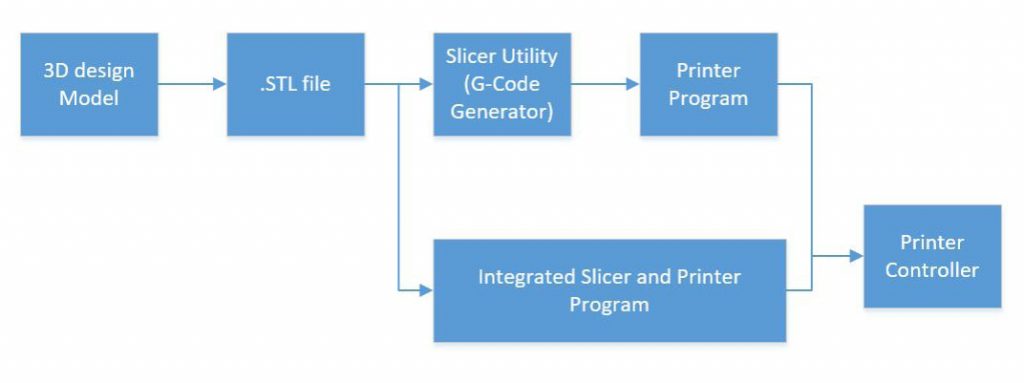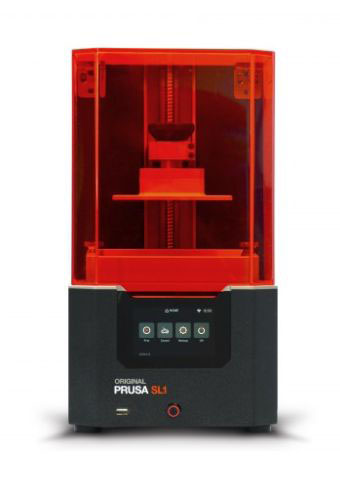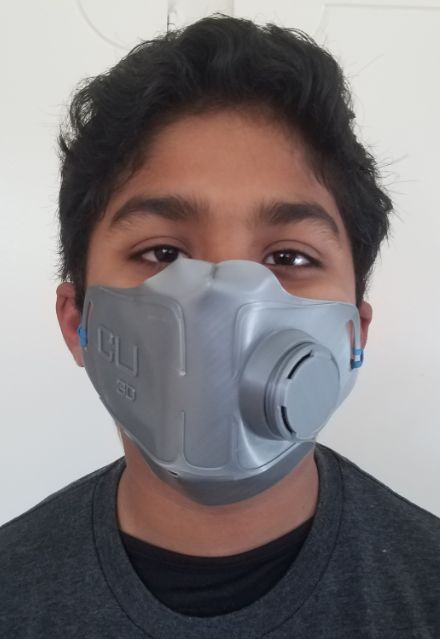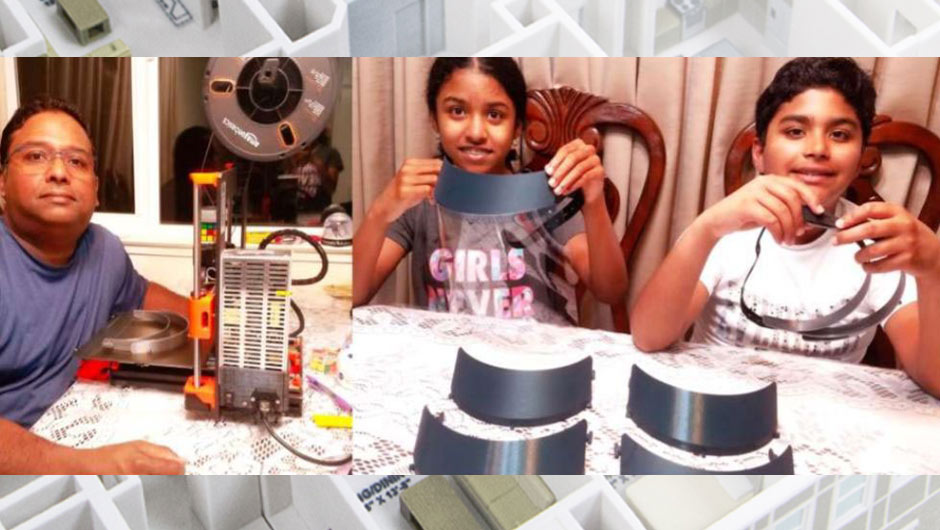What is 3D printing?
3D printing, or additive manufacturing, is the construction of a three-dimensional object from a CAD model or a digital 3D model. The term "3D printing & can refer to a variety of processes in which material is deposited, joined or solidified under computer control to create a three-dimensional object, with material being added together (such as liquid molecules or powder grains being fused together), typically layer by layer.
How does 3D printing work?
It all starts with a 3D model. You create one yourself or download it from a 3D repository. When creating it yourself you can choose to use a 3D scanner, app, haptic device, code or 3D modeling software.
There are many different 3D modeling software tools available. We often recommend beginners to start with Tinkercad. Tinkercad is free and works in your browser, you don’t have to install it on your computer. Tinkercad offers beginner lessons and has a built-in feature to get your 3D model printed via a 3D print service.
Advanced modelling can be done using Fusion 360 , Free CAD , BLENDER etc…
Now that you have a 3D model, the next step is to prepare the file for your 3D printer. This is called slicing. Slicing is dividing a 3D model into hundreds or thousands of horizontal layers and is done with slicing software. Some 3D printers have a built-in slicer and let you feed the raw .stl, .obj or even CAD file.
When your file is sliced, it’s ready to be fed to your 3D printer. This can be done via USB, SD or internet. Your sliced 3D model is now ready to be 3D printed layer by layer.

3D Printing Industry
3D printing was only suitable for prototyping and one-off manufacturing in the early stages, it is now rapidly transforming into a production technology.
Examples of 3D Printing
3D printing encompasses many forms of technologies and materials as 3D printing is being used in almost all industries you could think of. It’s important to see it as a cluster of diverse industries with a myriad of different applications.
A few examples:
- consumer products (eyewear, footwear, design, furniture)
- industrial products (manufacturing tools, prototypes, functional end-use parts)
- dental products
- prosthetics
- architectural scale models
Rapid Prototyping & Rapid Manufacturing
It’s fast and relatively cheap. From idea, to 3D model to holding a prototype in your hands is a matter of days instead of weeks. Iterations are easier and cheaper to make and you don’t need expensive molds or tools.
Car manufactures do on-demand manufacturing using 3D printing. They do not have to stock pile materials thus following just in time concepts.
Aircraft manufacturer uses 3D printing for large assemblies thus reducing number of sub components and reducing points of failure. Wastage of materials is also reduced.
3D printers are also used for 3D printing homes.
3D printing is used in medical industry to make implants and medical devices. 3D printing is used to make prosthetics.
Shoe manufactures are manufacturing 3D printed shoes that will custom fit your feet. Food industry is using 3D printing to print desserts and pizzas based on customer’s selection.
Multi-material 3D printing enables designers to simultaneously print metal traces and insulating polymers to quickly and precisely build complex & functional circuit boards & other innovative devices.
Which 3D printer is right for you ?
Buying a 3D printer is entirely up to you. There are filament based and resin based printers.


Fused deposition modelling (FDM) technology works using a plastic filament or metal wire which is unwound from a coil and supplying material to an extrusion nozzle which can turn the flow on and off. The nozzle is heated to melt the material and can be moved in both horizontal and vertical directions by a numerically controlled mechanism, directly controlled by a computer-aided manufacturing (CAM) software package. The object is produced by extruding melted material to form layers as the material hardens immediately after extrusion from the nozzle. This technology is most widely used with two plastic 3D printer filament types: ABS (Acrylonitrile Butadiene Styrene) and PLA (Polylactic acid). Though many other materials are available ranging in properties from wood fill to flexible and even conductive materials.
Resin 3D printing uses plastic resin as the raw material, in contrast to the filament used in FDM technology. The liquid resin used in 3D printing is typically composed of either epoxy or a combination of acrylic and methacrylic monomers. When exposed to UV radiation, these monomers quickly form molecular bonds with each other and turn into a solid polymer.
3D printing using resins is also an additive process, just like FDM printing. This means that the process relies on a layer-by-layer building process where one layer forms molecular bonds with the succeeding layer. This process repeats until the whole model has been recreated.
Pros of 3D Printing using Resins.
Better resolution of 3D printed object.
Faster printing process.
Stronger finished products.
Cons of 3D Printing using Resins.
Resin is very expensive compared to PLA filament.
No option of composite materials.
Very difficult and messy.
Very hard to find good quality resin.
Things to consider before buying 3D printer
Size of 3D printing bed. The bigger the printing bed, the larger objects you can print Auto level and calibration is very important. Not all machines auto calibrate. You may have to spend some time doing calibration of X , Y and Z axis for filament based 3D printers.
Types of filaments and their costs.
Software costs and learning curve for learning advanced 3D modelling software. Upgradability. Most 3D printers cannot be upgraded. But printers like PRUSA allow you to upgrade by buying an upgrade kit. This saves you money and you can be on the latest release by upgrading.
Few YouTube videos that might help you understand 3D printing:
3D Print your own designs for free with Tinker Cad
https://www.youtube.com/watch?v=n-MOwGsUZ68
Guide to 3D Printing Filament! PLA ABS PETG TPU PEEK ULTEM
https://www.youtube.com/watch?v=Or1FP43zx3I
Complete beginner’s guide to 3D printing – Assembly, tour, slicing, levelling and first prints
https://www.youtube.com/watch?v=T-Z3GmM20JM
Is resin 3D printing worth it?
https://www.youtube.com/watch?v=CrglNNw5A8Q
My journey with 3D printing
3 years ago I saw a Youtube video of Ted Talk. There was a surgeon who had a small baby come to him as the baby’s lung was collapsing. The surgeon did not know how to save the baby. The surgeon was travelling back home on train, when a passenger who was sitting next to him asked what challenges he faces in his profession. Surgeon mentioned that he is unable to save this baby because of collapsing lungs. The passenger was an engineer who was a 3D printing expert and pioneer. He requested the surgeon to send the MRI scan of the lungs of the baby. Long story short , the engineer designed a Stent for the lungs and the surgeon implanted the Stent thus saving the baby. This story really moved me. At that point I wanted to send my kids for a 3D printing course and also learn 3D printing myself. Ended up sending my kids to Engineering for Kids for learning 3D printing. Kids wanted to buy a 3D printer. I told them I will buy one if they are willing to use it to help other kids. Finally they decided that they will learn to print prosthetics and donate it to kids missing fingers and limbs. Thus we ended up buying a PRUSA printer. Purchased a KIT so kids could assemble it and fix it if any issue occurs. Thus our journey for 3D printing started.
We started to have fun doing different 3D prints. But God had a bigger purpose in our lives. Covid-19 hit hard and many hospitals were scrambling to get PPE. I got a call from a pediatrician late night. Pediatrician did not have a face shield and also mentioned that there is shortage of N95 masks. She requested if I could 3D print face shields and masks. I had never thought of it before. I started checking for existing designs for face shields. I contacted PRUSA, manufacturer for the 3D printer. They send me a design and I ended up printing face shields and donating it to hospitals and dental surgeons. My kids started helping me by drawing and cutting the PETG sheets that go over the front of the face shields. Thus we ended up donating more than 150 face shields for different organizations.







